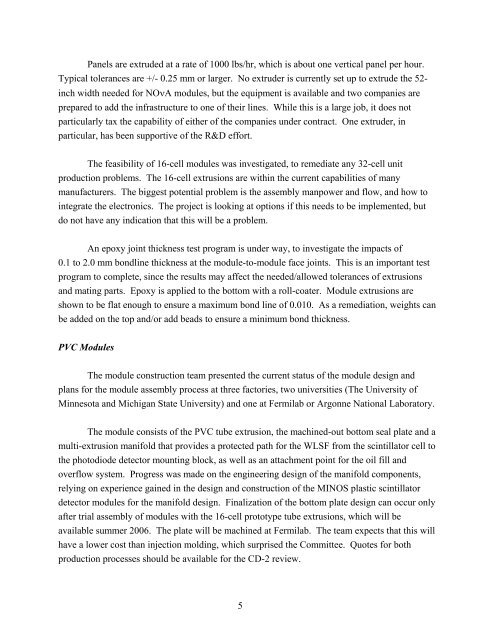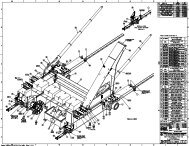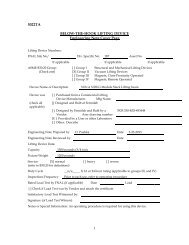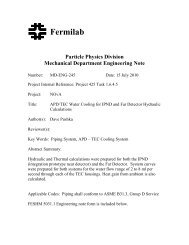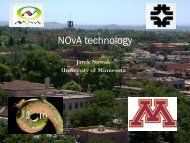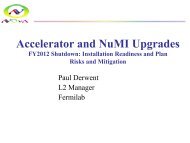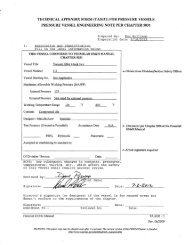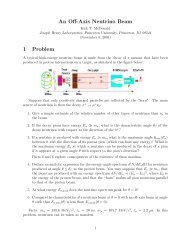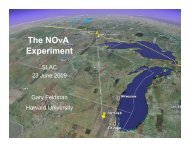NuMi Off-Axis Neutrino Appearance - NOVA Document Database ...
NuMi Off-Axis Neutrino Appearance - NOVA Document Database ...
NuMi Off-Axis Neutrino Appearance - NOVA Document Database ...
You also want an ePaper? Increase the reach of your titles
YUMPU automatically turns print PDFs into web optimized ePapers that Google loves.
Panels are extruded at a rate of 1000 lbs/hr, which is about one vertical panel per hour.<br />
Typical tolerances are +/- 0.25 mm or larger. No extruder is currently set up to extrude the 52-<br />
inch width needed for NOνA modules, but the equipment is available and two companies are<br />
prepared to add the infrastructure to one of their lines. While this is a large job, it does not<br />
particularly tax the capability of either of the companies under contract. One extruder, in<br />
particular, has been supportive of the R&D effort.<br />
The feasibility of 16-cell modules was investigated, to remediate any 32-cell unit<br />
production problems. The 16-cell extrusions are within the current capabilities of many<br />
manufacturers. The biggest potential problem is the assembly manpower and flow, and how to<br />
integrate the electronics. The project is looking at options if this needs to be implemented, but<br />
do not have any indication that this will be a problem.<br />
An epoxy joint thickness test program is under way, to investigate the impacts of<br />
0.1 to 2.0 mm bondline thickness at the module-to-module face joints. This is an important test<br />
program to complete, since the results may affect the needed/allowed tolerances of extrusions<br />
and mating parts. Epoxy is applied to the bottom with a roll-coater. Module extrusions are<br />
shown to be flat enough to ensure a maximum bond line of 0.010. As a remediation, weights can<br />
be added on the top and/or add beads to ensure a minimum bond thickness.<br />
PVC Modules<br />
The module construction team presented the current status of the module design and<br />
plans for the module assembly process at three factories, two universities (The University of<br />
Minnesota and Michigan State University) and one at Fermilab or Argonne National Laboratory.<br />
The module consists of the PVC tube extrusion, the machined-out bottom seal plate and a<br />
multi-extrusion manifold that provides a protected path for the WLSF from the scintillator cell to<br />
the photodiode detector mounting block, as well as an attachment point for the oil fill and<br />
overflow system. Progress was made on the engineering design of the manifold components,<br />
relying on experience gained in the design and construction of the MINOS plastic scintillator<br />
detector modules for the manifold design. Finalization of the bottom plate design can occur only<br />
after trial assembly of modules with the 16-cell prototype tube extrusions, which will be<br />
available summer 2006. The plate will be machined at Fermilab. The team expects that this will<br />
have a lower cost than injection molding, which surprised the Committee. Quotes for both<br />
production processes should be available for the CD-2 review.<br />
5


